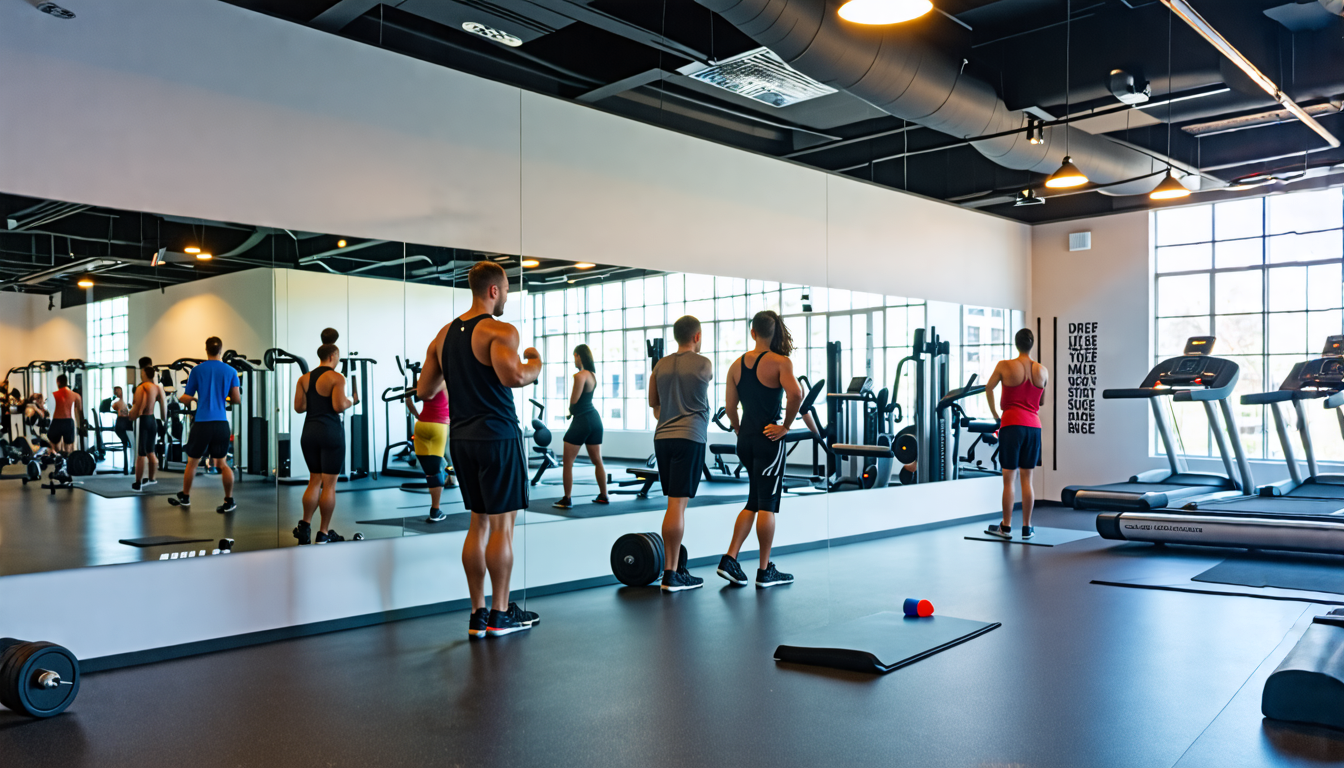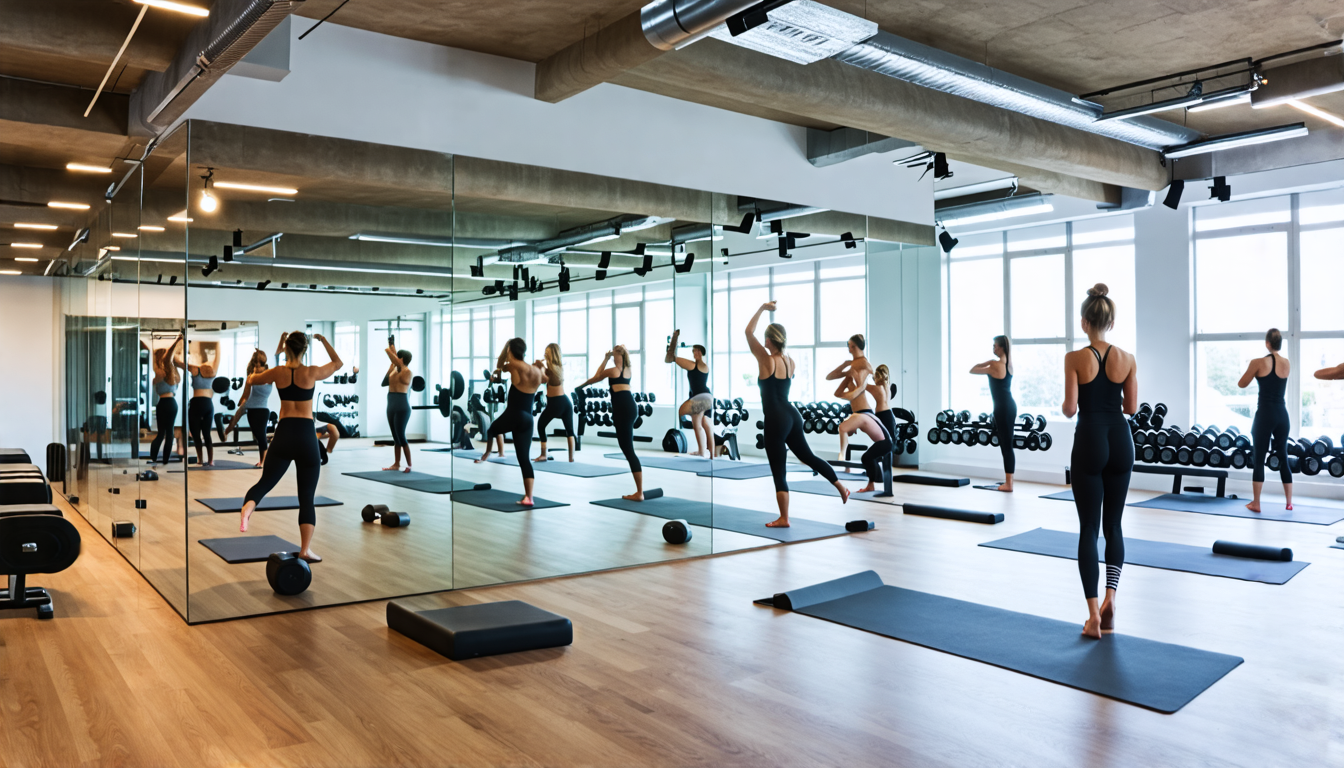Adding mirrors to your fitness and exercise space can significantly elevate your workout experience, providing numerous benefits that can enhance your overall performance and safety. Mirrors are more than just decorative elements; they serve as essential tools for anyone serious about improving their form and technique. Proper form is crucial in any exercise routine to maximize effectiveness and minimize the risk of injury. A mirror offers real-time visual feedback, enabling you to make immediate adjustments and maintain correct postures. This can help in refining your technique, ensuring each movement is performed as intended. Moreover, by regularly checking your form in the mirror, you can quickly identify any deviations that might lead to improper movements and potential injuries.
Effectively incorporating mirrors into your workout routine requires some strategic planning. The placement of mirrors should be tailored to the types of exercises you perform. For instance, placing mirrors in front of or next to areas designated for weightlifting or yoga can provide better angles for monitoring your form. In addition to mirrors, consider integrating other tools like fitness apps or working with a personal trainer to get the most comprehensive feedback. While using mirrors, it’s essential to engage mindfully, using them to enhance self-awareness without becoming overly dependent on them. By balancing visual feedback with concentrated effort, you can achieve a healthier and more effective workout regimen.
Importance of Using Mirrors in Fitness and Exercise
Implementing mirrors in workout spaces can significantly enhance the quality and effectiveness of fitness routines. Whether you are lifting weights, performing yoga, or engaging in cardio workouts, mirrors play an essential role in ensuring proper form and technique, thus maximizing the benefits of your exercises. Below, we will explore the key advantages of incorporating mirrors in your workout environment.
Enhancing Form
One of the most critical aspects of any workout is maintaining proper form. Mirrors provide immediate visual feedback, allowing you to see if you are performing exercises correctly. Here’s how mirrors help in enhancing form:
- Real-time Adjustments: By watching yourself in the mirror, you can make immediate corrections to your form. This instant feedback loop is invaluable for maintaining the proper posture and alignment during exercises.
- Consistency: Seeing your reflection helps you develop a consistent routine. Over time, you’ll become familiar with what correct form looks and feels like, reducing the likelihood of performing exercises incorrectly.
- Muscle Engagement: Mirrors enable you to ensure that you are engaging the correct muscle groups during specific exercises. For example, in strength training, visualizing your form can help you activate your core and avoid relying on other muscles to compensate.
Technique Refinement
Advanced fitness enthusiasts often seek to refine their techniques to maximize performance and efficiency. Mirrors are a perfect tool for this purpose:
- Precision: Mirrors allow you to observe the finer details of your movements, enabling you to make precise adjustments. This is particularly useful for complex exercises like Olympic lifts, where slight deviations in form can significantly impact performance.
- Balance and Coordination: Good technique often involves maintaining balance and coordinating various body parts. Mirrors help you ensure that movements are symmetrical and fluid, which is crucial for exercises like yoga or pilates.
- Progress Tracking: Watching yourself in the mirror can be motivating and offer a visual confirmation of your progress. As your technique improves, you’ll be able to see tangible changes in your movements and overall fitness level.
Injury Prevention
One of the most compelling reasons to use mirrors during your workouts is injury prevention. Incorrect form and technique are common injury causes; mirrors can help you avoid these pitfalls:
- Error Detection: Mirrors allow you to spot improper movements or imbalances that could lead to injuries. For instance, you might notice that you are leaning too far forward during a squat, which can be corrected immediately to prevent strain.
- Alignment Awareness: Proper alignment is essential for preventing joint and muscle injuries. Mirrors provide a clear view of your body’s alignment, ensuring that joints are not being subjected to undue stress.
- Self-monitoring: By providing an external perspective, mirrors help you become more self-aware. This heightened awareness makes it easier to detect when something feels off, enabling you to adjust before an injury occurs.

Best Practices for Implementing Mirrors in Workout Routines
To maximize the benefits of mirrors in your workout space, it’s essential to implement them thoughtfully and strategically. Below are best practices to ensure that you get the most out of your mirrors while maintaining a safe and effective exercise environment.
Mirror Placement
The placement of mirrors in your workout area is crucial for their effectiveness. Where you position them can significantly impact how well you can monitor your form and technique. Consider the type of exercises you perform most frequently to determine optimal mirror placement.
- Weightlifting: Position mirrors directly in front of areas where you lift weights. This allows you to keep an eye on your alignment and posture during exercises such as squats, deadlifts, and bench presses. Ensure the mirrors are large enough to give a full view of your body from multiple angles.
- Yoga: For yoga enthusiasts, mirrors are best placed along the length of the yoga mat. This helps in verifying alignment and posture in various asanas. Floor-to-ceiling mirrors can be particularly beneficial here.
- Cardio Exercises: When it comes to running on a treadmill or using stationary bikes, mirrors should be placed in a way that enables you to observe your posture, leg alignment, and overall body mechanics.
Remember, mirrors need to be securely mounted to ensure safety. Avoid placing them where they could be easily bumped or knocked over.
Combining Mirrors with Other Tools
While mirrors provide valuable visual feedback, combining them with other tools can amplify their benefits. Here are some ways to integrate mirrors with additional resources:
- Apps and Digital Tools: Utilize fitness apps that provide real-time exercise analysis. Position your device next to a mirror so you can receive digital feedback while also visually checking your form.
- Personal Trainers: If you’re working with a personal trainer, mirrors can serve as a supplementary tool. The trainer can give you immediate verbal feedback while you simultaneously make corrections based on what you see in the mirror.
- Exercise Logs: Keep a record of your workouts, noting any form or technique issues you observe. Review your logs periodically, using the mirror to track improvements and make adjustments as necessary.
Mindful Engagement
One of the most important aspects of using mirrors in your workout routine is mindful engagement. While mirrors are useful for self-monitoring, it’s essential not to become overly reliant on them. Here are some tips to use mirrors mindfully:
- Self-awareness: Cultivate an awareness of how your body feels during exercises. Use the mirror as an initial guide, but also pay attention to internal cues. This helps you develop a more intuitive sense of proper form and technique.
- Periodic Checks: Instead of constantly watching yourself in the mirror, use it for periodic form checks. This prevents distractions and allows you to stay focused on the exercise itself.
- Balanced Focus: Train your mind to balance between visual feedback and internal sensations. This approach promotes a healthier connection between mind and body, contributing to overall fitness progress.
By placing mirrors strategically, combining them with other tools, and engaging with them mindfully, you can create a more effective and enriching workout experience. Whether you’re aiming to perfect your form, refine your techniques, or prevent injuries, these best practices will help you harness the full potential of mirrors in your fitness journey.
In conclusion, incorporating mirrors into your workout space is an invaluable investment for enhancing your fitness journey. By providing immediate visual feedback, mirrors play a crucial role in improving form and technique, ultimately leading to more effective and efficient workouts. They help you maintain proper alignment, catch and correct any discrepancies in your movements, and reduce the risk of injury by ensuring that you are performing exercises safely.
To maximize the benefits of mirrors, it’s essential to place them optimally to cover the key areas where you perform various exercises, whether it’s weightlifting, yoga, or other workouts. Additionally, combining the use of mirrors with other tools, such as fitness apps or guidance from personal trainers, can further enhance your ability to refine techniques and achieve your fitness goals.
However, it’s important to use mirrors mindfully. While they are excellent for providing feedback, avoid becoming overly reliant on them. Balance their use with developing a strong internal sense of body awareness. Through this approach, you can foster a more holistic and effective fitness routine that leads to long-term success and well-being.

